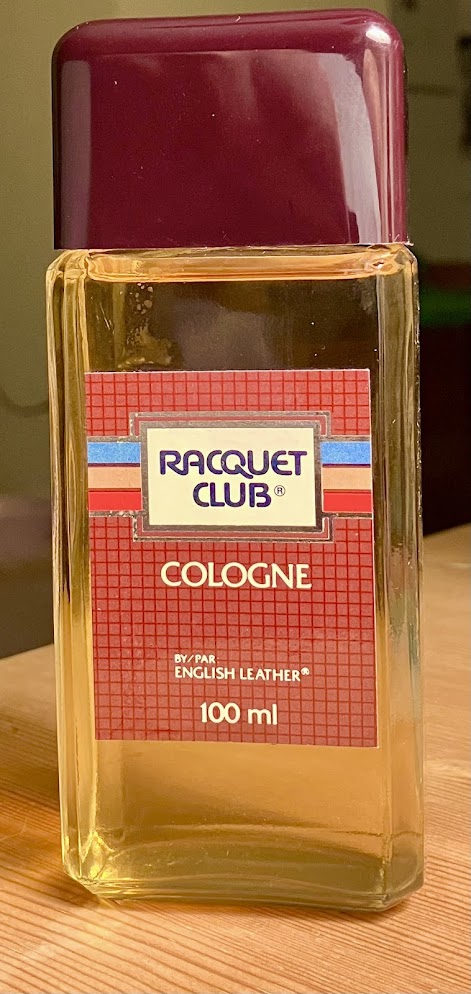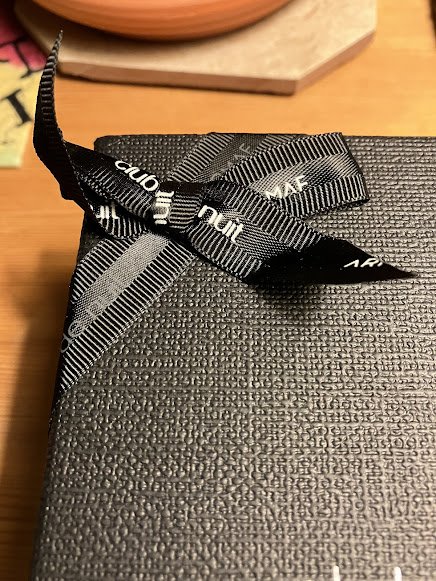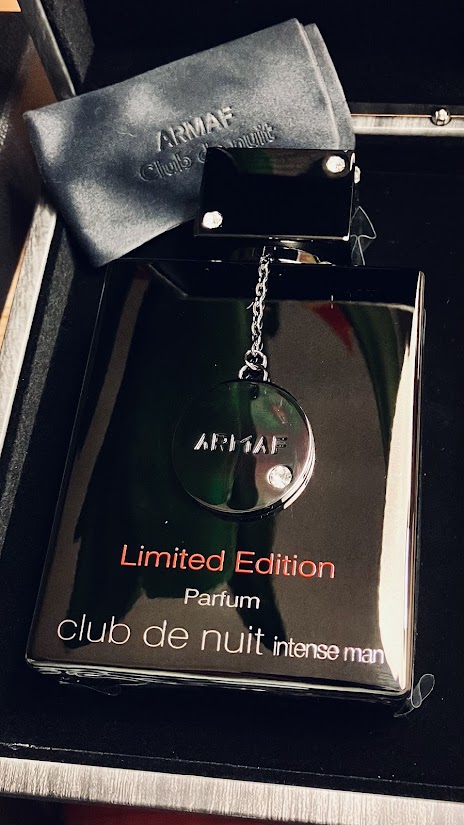Recently, at least three people have engaged me in conversations about online perfume merchants, their product experiences, and where I buy my pricier stuff, particularly Creed fragrances. This is always an interesting topic for me because the perfume hunt is nearly the entire thrill: there’s almost something anticlimactic about actually receiving and using the product.
This might surprise some, but it's the truth, and I can’t lie to you: ninety-nine percent of my fragrance purchases are made on eBay. The remaining 1% is split evenly between Amazon and Fragrancenet. What may also surprise readers is the fact that my eBay purchases have been nearly 100% satisfactory, while my experiences with Amazon and Fragrancenet have been just okay, though not terrible. On average, I would say that eBay has the best selection of genuine vintage fragrances, so for those who are after scents from the seventies, eighties, or nineties, I can’t think of a better place to find them.
eBay gets a bad rap because it’s littered with counterfeiters, speculative pricing, grossly variable return policies, and it just feels like the Wild West of the fragrance world. When it comes to counterfeits, there are some basic rules of thumb. First, know your product. Don’t jump on eBay looking to find Bleu de Chanel in any concentration without having ever once laid eyes on an actual bottle of Chanel. Second, don’t buy Chanel on eBay. Of all the designers, Chanel has the tightest grip on its distribution channels and doesn’t allow "grey market" bottles to siphon onto discounter or auction sites.
Third, know your prices. When thinking about value, especially vintage value, you’re thinking of inflation, not arbitrary greedy-boy pricing. There are plenty of guys sitting in their underwear in mom’s basement who get their hands on bottles of Balenciaga pour Homme, Patou pour Homme, Fendi Donna, and declare that it’s worth a gajillion dollars. That doesn’t mean it’s actually worth a gajillion dollars. If it was going for $45 at Macy’s in 1989, adjust for 2024 dollars, add a twenty percent profit margin for the seller, and there’s your price. The Bureau of Labor Statistics will crunch the numbers for you. It’s not hard.
“But Bryan,” you shout, “how would I know what it cost in 1989?” That loops back to the first rule: know your product. Do your research. Ask around. Look for old magazine ads. Pick a year to go by, with the last known year of production being a good bet, and go from there. If you’re looking at something like Grey Flannel by Geoffrey Beene, there is quite a bit to read. You can even read my article about its corporate distribution history for pointers. Getting into vintage perfume isn’t just about loving vintage perfume; it’s about loving what there is to know about it, and doing that legwork regularly. There’s no joy in scoring a bottle of Patou pour Homme for $900 if you don’t know much about it.
Fourth, don’t worry about returns. I know, that sounds insane. How can you not worry about returns when you’re buying something with real money? You need to know you can get your money back, right? Here’s the problem with expecting a great return policy on a perfume: you’re already buying a return to begin with. If you’re buying a bottle of Creed on Fragrancenet, you’re probably not getting a brand-new bottle. Even if you are, it’s still a kickback bottle from another merchant. It’s been sitting in a warehouse for months, possibly even years, and the conditions in that warehouse are a complete mystery. So no, if you’re laying down two hundred dollars on a bottle of stale Creed just so you can own a Creed for that amount and not twice as much, don’t get all sniffy-sniffy back-in-the-box.
I don’t want your returned bottle of a merchant kickback Creed. You send it back to Fragrancenet, and they’ll put it right back on sale the next day. Then some other guy will buy it, thinking he’s defeated the universe and stolen a Creed at designer prices. And now he gets your sloppy seconds. You get . . . your money back. What’s the point? Fifth, know you’re insane. Let me say that another way: Know. You. Are. Insane. You are scouring the internet in your spare time looking for a bottle of something you don’t want to buy from the proprietary source. You are expecting perfection. You are expecting to thread the needle of good fortune every time. And often you succeed. Often you are right. The perfume arrives looking and smelling great, and you win.
But every once in a blue moon, the chips fall wrong, and you get something with a defect in smell, container, or both. Again, understand this: you are the buyer, and because you are the buyer, the phrase “buyer beware” applies every time you pull the trigger. You want your niche fragrance from an eBay merchant to be "as advertised"? Read the ad, make sure the pictures are of the actual product and not stock images, and if still in doubt, send a message and ask questions. Cover all your bases before you purchase so that you understand what you’re in for, and there are few, if any, surprises. If you are a vintage fanatic, recognize the added layer of risk inherent in that pursuit. Combine it with the regular risks, and tally up your risk tolerance metric, but be honest with yourself about it. Nobody bullshits you better than you.
If vintage isn’t your thing, and you’re content with buying new bottles of new fragrances, then it’s all about your taste. Are you an Amazon guy or an eBayer? Does Fragrancenet, FragranceX, or Mercari work for you? Figure it out. The only way is to try them. Apply the rules I’ve listed here to yourself, put yourself in the reality framework necessary for such a fantastic endeavor, and go for it. If you’re an impulse buyer, you’ll be more vulnerable to expensive errors. Here’s an easy example: you’re desperate to try Creed’s new Carmina, and you find it on eBay for $128 from Taiwan or Hong Kong. Score! Except, not a score. Counterfeit. Slow down. Be real. Live in the real world for a few seconds before hitting the “Buy Now” button. Spare your bank account. Buy from Taiwan or Hong Kong, and kiss your investment goodbye.
The nice thing about eBay is that shipping is often free. The serious merchants on eBay will ship quickly, and the best will get the product to you within four days. It doesn’t get much better than that. Buying is easy, eBay remembers your info, you won’t get hacked, and the more you buy (and pay fast), the better your eBay rating, which only improves service from top-tier merchants. The longest I’ve ever had to wait for an eBay purchase is three weeks, and that only happened once, with a safety razor I bought in 2013. To date, I’ve only received one wrong product, a bottle of Myrsol Formula K (which I reviewed), when I had actually ordered Formula C. I kept the K. Why wouldn’t I keep the K? I don’t know K from C from any of the other Myrsols, and I was purchasing it to review it, so what the hell. I kept it, reviewed it, and didn’t regret it—it was a terrific peppermint splash that is unfortunately much harder to come by these days.
Fragrancenet has been a different story. Every purchase I’ve made there has taken a long time to arrive, sometimes more than three weeks. One purchase took nearly two months, with no discernible reason for the delay. Their customer service was the predictable outsourced call center experience. The representative couldn’t have cared less about my bottle of Green Irish Tweed, and I could barely understand a word he was saying. I used to buy my Creeds exclusively from Fragrancenet, but two of my GITs were stale. Two were fresh, but not quite as fresh as the one I bought directly from Creed. The retail-purchased bottle stood out with stellar, beast-mode performance. One GIT from Fragrancenet was so stale and “off” that it resembled Aspen more than GIT. Even the top notes were awfully wintergreen-y for GIT, and I resented that.
Amazon has been a mixed bag as well. The big issue with Amazon is long delivery times and stolen packages. I’ve had two packages stolen or lost by Amazon, and I suspect that the Amazon truck is followed by package thieves (most eBay retailers use the plain old federal snail-mail Post Office). Amazon’s customer service is middling, and their website is surprisingly difficult to navigate. It once took me fifteen minutes to find the service bot, and another five to figure out how to use it, only to have it not help me at all, and in fact, blame me for the issue (item not yet delivered, site saying it was delivered). I ended up receiving the product the next day, but I find it odd that Amazon’s site is prone to delivery update failures. The “Your Item Has Been Delivered” alert was wrong not once, but twice in one year, and after that, I slowed down on buying from them. I don’t mind waiting for a fragrance, but don’t tell me I have the fragrance when it hasn’t even been put out for delivery yet, and don’t blame me for getting it wrong.
I haven’t tried FragranceX or Mercari, and I’ve heard the latter is riddled with sketchy merchants and fakes. I have purchased fragrances on Etsy, but only small-batch indie stuff. I tend to go after vintage Pinaud products, affordable grey market zombie label fragrances (like Van Cleef & Arpels, Halston, etc.), and Creeds, vintage or new. eBay is my go-to. If I can get a better price on a new fragrance, Amazon is an option, as I did recently with Brut. But that is very rare, especially since I don’t have Prime and usually pay for shipping. Sure, tax is a hassle, but tax is tax no matter where you buy.
In closing, a word about “Inspector Gadgeting” online merchants. I’ve met several people over the years who will dig into the business documents and licensing of various grey market retailers and then warn me to watch out for them. They’ll say things like, “They folded in one state and opened shop again in another,” or “They’re only making $100K a year,” or “They only have four or five employees.” I’ll be honest: I couldn’t care less about that. I don’t care where you finagled your business papers, where you set up shop today vs. yesterday, how many people are on your payroll, or how you rate with the BBB. What I care about is if you can get me the hard-to-find perfume within a week, full bottle, on the money. If you can do that, I can forgive a few blemishes, signs of a returned product, etc. But that’s entirely my taste in buying. I understand that others may blanche at the same prospects that I’m comfortable with and will look elsewhere. C’est la vie!
Update 9/1/24:
A few minutes ago, a reader sent me a message on Fragrantica claiming that Fragrancenet has been selling mass numbers of "used" Creed Silver Mountain Water bottles on eBay (roughly 95% to 99% full) for less than eighty dollars per 100 ml bottle. He claims that he has amassed a sizable Creed collection by "getting in" on these grey market bargains, which of course could then be resold at a huge profit. My take? Bullshit.
























